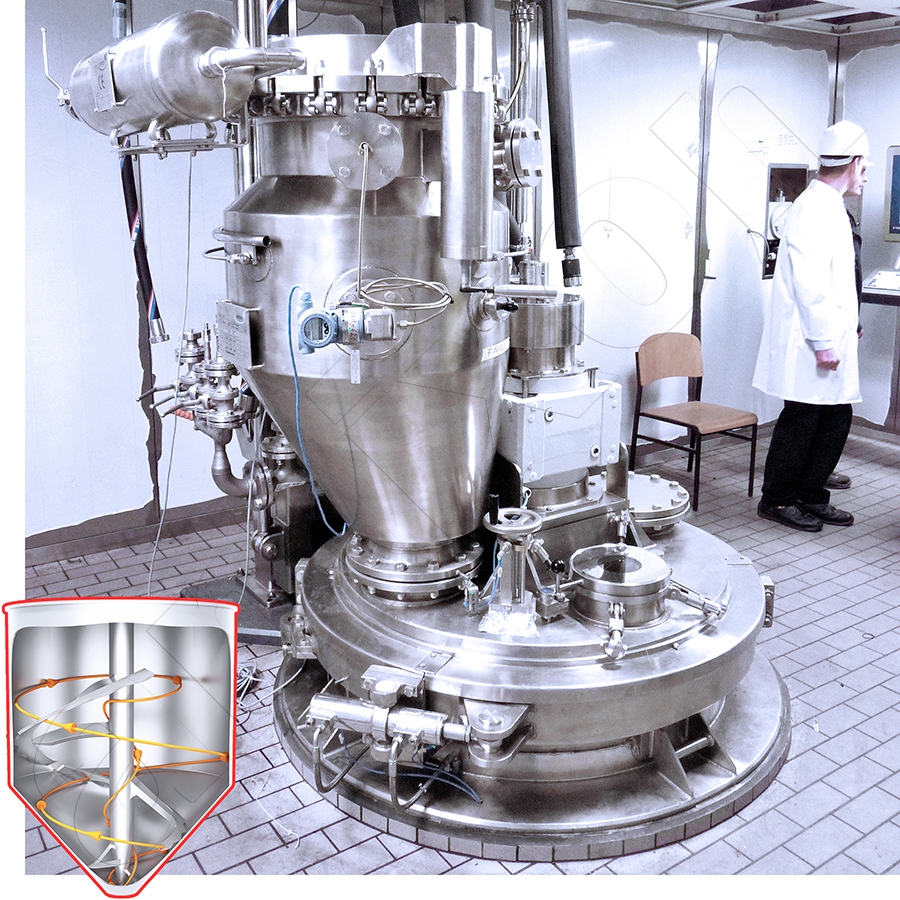
Germ and enzyme reduction
To extend the shelf life of food, microorganisms and enzymes must be reduced. This is achieved by thermal treatment. Enzymes are inactivated and microorganisms are reliably destroyed, depending on the temperature and exposure time.
Spices carry their germ load mainly on the surface of the particles. A particularly effective method is treatment with saturated water vapour. When the vapour hits the surface, it condenses suddenly. This releases a large amount of heat directly onto the surface of the particles. The surface quickly heats up to germ-killing temperatures, while the inside of the particle remains cool. In this way, flavourings and volatile ingredients are largely preserved.
The penetrated water is then removed by applying a vacuum. This step also leads to spontaneous cooling of the product. The result is a dry, cool powder that is easy to package and has a long shelf life.
Such sterilisation and drying processes can be carried out in the amixon® sterile reactor. The equipment combines a large heat transfer surface with gentle mixing technology. This enables efficient heat transfer and uniform process control. At the end of vacuum contact drying, the atmosphere in the reactor can be topped up with nitrogen or carbon dioxide to reduce the oxygen content. This further improves the microbial stability and shelf life of spices.
amixon® always advises you to carry out tests in their technical centres.
